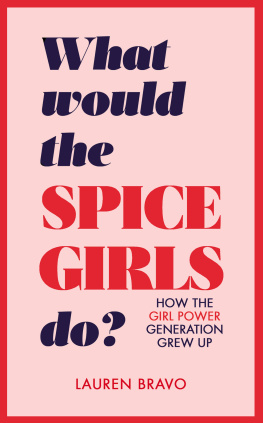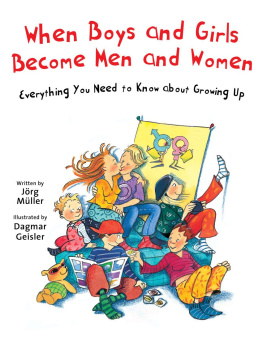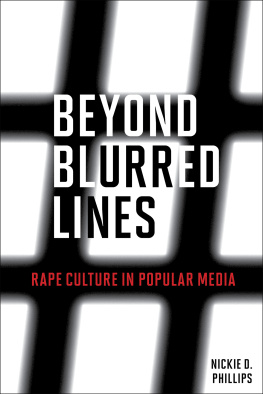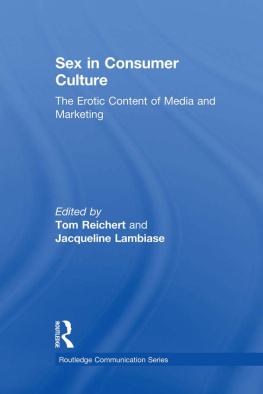Constructing Girlhood
Feminist Perspectives on The Past and Present Advisory Editorial Board
Lisa Adkins, University of The West of England, UK
Harriet Bradley, University of Sunderland, UK
Avtar Brah, University of London, UK
Barbara Caine, University of Sydney, Australia
Sara Delamont, University of Wales College of Cardiff, UK
Mary Evans, University of Kent at Canterbury, UK
Gabriele Griffin, Nene College, UK
Jalna Hanmer, University of Bradford, UK
Maggie Humm, University of East London, UK
Sue Lees, University of North London, UK
Diana Leonard, University of London, UK
Terry Lovell, University of Warwick, UK
Maureen McNeil, University of Birmingham, UK
Mary Maynard, University of York, UK
Ann Phoenix, University of London, UK
Caroline Ramazanoglu, University of London, UK
Sue Scott, University of Stirling, UK
Janet Siltanen, University of Edinburgh, UK
Dale Spender, Australia
Penny Summerfield, University of Lancaster, UK
Martha Vicinus, University of Michigan, USA
Claire Wallace, University of Lancaster, UK
Christine Zmroczek, Roehampton Institute of Higher Education, UK
Constructing Girlhood:
Popular Magazines for Girls Growing up in England, 19201950
Penny Tinkler
Penny Tinkler, 1995
All rights reserved. No part of this publication may be reproduced, stored in a retrieval system, or transmitted, in any form or by any means, electronic, mechanical, photocopying, recording, or otherwise, without permission in writing from the Publisher.
First published 1995
by Taylor & Francis
2 Park Square, Milton Park, Abingdon, Oxon, OX14 4RN
Transferred to Digital Printing 2006
A Catalogue Record for this book is available from the British Library
ISBN 0 7484 0285 3
ISBN 0 7484 0286 1 (pbk)
ISBN 978-1-135-34461-0 (epub)
Library of Congress Cataloging-in-Publication Data are available on request
Typeset in 10pt Times
by Solidus (Bristol) Limited
Printed and bound by CPI Antony Rowe, Eastbourne
For Muriel,
and in memory of Marjorie.
Contents
Thanks go to Penny Summerfield who supervised the PhD thesis on which this book is based, for her encouragement, also her advice and thoughtful comment on the writing of Constructing Girlhood. I would also like to mention members of the Centre for Womens Studies at Lancaster University during the late 1980s who persuaded me to proceed with this project, especially Lisa Adkins and Celia Lury. Special thanks go to the friends and colleagues who have given invaluable support, and also constructive feedback on the preparation of the manuscript for this book, in particular Lynn Abrams, Margaret Badley, Sally A. Branch, Bridget Cooke, David Morgan, Alison Oram and Bobbie Wells. Thanks also to Joy and Frank Tinkler, Mario Chin and Rosie Briggs who have been a constant source of support.
I would also like to express my gratitude to those people who responded to my requests for help in researching the production of girls magazines, especially the women and men who contributed insights into editorial processes through correspondence and/or interview: Gordan Davies, Mary Grieve, James Hemming, Patricia Lamburn, Mrs Jean Lee, W.O.G. Lofts, Peggy Makins, W.D. McClelland, Marcus Morris, Lorrie Purden. I would also like to thank the staff at the following libraries and archives for their assistance: Lancaster University Library Inter-Library Loans Service, The British Library, the Institute of Practitioners in Advertising and the Mass-Observation Archive.
Finally, I would like to thank Deb Tarrant for her unstinting encouragement, wacky sense of humour and also practical support throughout the writing of this book.
Material copyright the Trustees of the Mass-Observation Archive at the University of Sussex, reproduced by permission of Curtis Brown Group Ltd, London. Magazine covers are reproduced by permission of The British Library.
Because Ive been a worker like you, I know what girls like, and Im going to give you a paper youll enjoy.
(Editor, Pegs Paper, 1919)
Essentially the School Friend will appeal chiefly to the girl at school, the girl whose tastes have not previously been catered for.
(Editor, School Friend, 1919)
Magazines for girls proliferated during the interwar years although many became casualties of the Second World War. As the descriptions of Pegs Paper and School Friend reveal, girls papers targeted a variety of groups including working-class and middle-class schoolgirls, and also young working women employed in factories, mills and commerce. The term girl, as this range suggests, was used quite broadly in periodical publishing, although it principally referred to the unmarried adolescent; wives and mothers were more usually described as women. The range of magazines produced for adolescent girls between 1920 and 1950 is the focus of this book. How did magazines present girlhood and femininity to their readers? How were these representations produced? What does the form and content of these papers reveal about the cultural construction of adolescent girlhood in this historical period?
Emerging and recent research has contributed important insights into the position of women in society during the period 1920 to 1950, There are, however, important reasons for focusing on adolescent girlhood during the period 1920 to 1950 not least because we still know very little about the configurations of gender, class, age and race for the conditions of girlhood and its cultural construction. Similarly we remain largely uninformed about the implications of social, economic and cultural change for approaches to girls growing up in this period, in particular the significance of the two world wars, the depression, demographic imbalance, the declining birth rate, interwar homophobia, and the 1920s postwar back to the home pressures. However, it is not only that adolescent girlhood has been marginalised in twentieth-century social and womens history, it is also that there has been little attention to biography, age, and the processes of growing up and growing old.
Constructing Girlhood addresses aspects of biographic change through an exploration of the ways in which popular girls magazines constructed, organised and managed age as well as social class in their production of different categories of girl readers and in their representations of age- and class-specific aspects of adolescence. In its attention to age, this book addresses change along two axes historical and biographical and so differs from previous historical work on magazines which has focused on social class as the major variable in the cultural construction of femininity; although age is recognised in these studies, it is not explored as a dynamic in the sense of how magazines vary according to the age of their readership. Attention to the ways in which popular literature constructed and managed age is particularly important in the context of twentieth-century preoccupation with age, age-grades, and generation. Indeed the concept of adolescence as a period of transition between child and adult was largely a product of late nineteenth and early twentieth century initiatives which institutionalised a prolonged period of dependency of young people on the family, facilitated by the extension of compulsory schooling and restrictions on child labour. This institutionalised dependency was further consolidated by changes in the legal status of young people, the introduction of the Youth Service in 1939 and attempts, following the Fisher Act of 1918 and the Education Act of 1944, to establish compulsory part-time continuation education for adoles-







